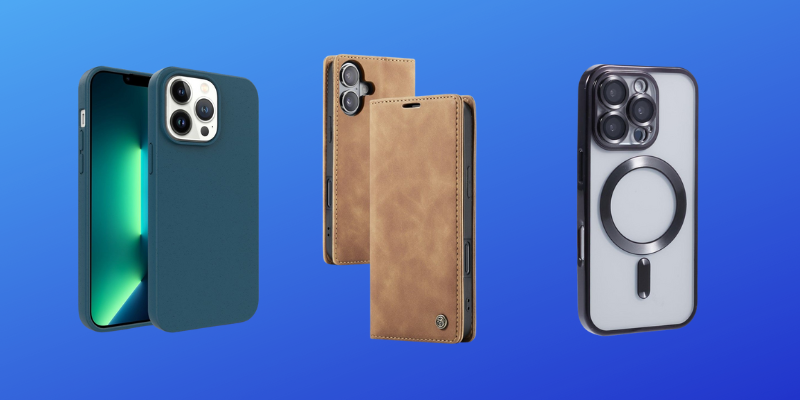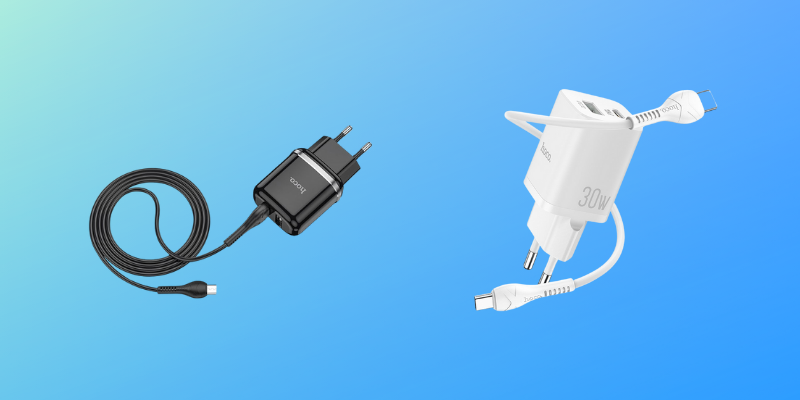
Your smartphone is one of your most-used everyday tools - so it makes sense to protect it. And when it comes to keeping your screen scratch-free, smudge-resistant, and crack-proof, a quality screen protector is a must. But with so many types on the market - tempered glass, plastic film, privacy shields - it can be overwhelming to know what’s best for your device and lifestyle.
In this guide, we’ll break down everything you need to know before buying a screen protector. From the different materials available to whether or not you can pair it with a case, we’ll help you make an informed choice that keeps your phone looking like new.
Take a look at our collection of iPhone 16 screen protectors.
What you should think about before buying
Before you choose a screen protector, it’s important to consider how you use your phone and what kind of protection you really need. Not all screen protectors are created equal - some prioritize ease of use, while others offer heavy-duty protection. The shape of your phone screen and whether you use a case can also impact which option will work best.
Below, we’ll walk you through the key factors to think about. Whether you’re looking for something quick to apply, especially durable, or compatible with a curved screen or case, we’ve got you covered.
Do you want something quick and easy?
If you're looking for a straightforward, budget-friendly way to protect your phone's screen, a plastic film screen protector might be the ideal choice. These thin, flexible protectors are typically made from materials like PET (Polyethylene Terephthalate) or TPU (Thermoplastic Polyurethane). They adhere to your screen using static cling or a mild adhesive, making installation quick and hassle-free.
Plastic film protectors are especially suitable for users who prioritize ease of application and affordability. They provide basic protection against scratches and minor abrasions, making them a practical option for everyday use.
Take a look at our collection of Samsung Galaxy S25 screen protectors.
Do you want something protective?
If safeguarding your phone from drops, scratches, and daily wear is your priority, a tempered glass screen protector is an excellent choice. Manufactured through a process of heating and rapid cooling, tempered glass boasts enhanced strength and durability compared to standard glass. Typically measuring between 0.3 to 0.5mm in thickness, these protectors are designed to absorb shocks and distribute impact forces, thereby reducing the likelihood of screen damage upon accidental drops.
One of the standout features of tempered glass protectors is their hardness rating, often reaching up to 9H on the Mohs scale. This high rating indicates exceptional resistance to scratches from everyday items like keys, coins, and sand, ensuring your screen remains pristine.
Beyond physical protection, tempered glass maintain the clarity and touch sensitivity of your device's screen. Their high transparency ensures that colors and details are not distorted, allowing users to enjoy a vivid and immersive display. Furthermore, the smooth surface of tempered glass makes cleaning your screen protector much easier than plastic alternatives.
For those concerned about glare, many tempered glass protectors come equipped with an anti-glare coating. This feature reduces reflections, making it easier to view your screen in bright environments and reducing eye strain during prolonged use.
While the installation of tempered glass screen protectors is generally straightforward, achieving a bubble-free application requires careful attention. Dust particles or imperfections on the screen can lead to bubble formation, which may interfere with touch sensitivity and compromise the protector's effectiveness.
Take a look at our collection of Google Pixel 9 screen protectors.
Is the screen on your phone curved?
Modern smartphones often feature curved-edge displays, which can make finding the right screen protector a bit more complicated. If your phone has a curved screen, you’ll need to decide whether to go with a screen protector that’s also curved, or stick with a standard flat option.
-
Curved-edge screen protectors are designed to wrap around the edges of your phone’s display, offering full coverage and a seamless look. They’re ideal if you want complete protection - not just for the flat portion of the screen, but for the vulnerable edges too. However, curved protectors can sometimes be trickier to install and may be more prone to lifting or bubbling at the edges, especially if not aligned perfectly.
-
Flat screen protectors, on the other hand, are easier to apply and often more affordable. But because they don’t cover the curved portions of the display, they leave parts of your screen exposed. For some users, this trade-off is worth it for the sake of simplicity - especially if you pair the protector with a sturdy case that covers the edges.
Ultimately, it comes down to your priorities: do you want easier application, or fuller protection?
Can you use a screen protector together with a phone case?
In most cases, yes - you can absolutely use a screen protector alongside a phone case. In fact, combining both offers the best overall protection: the screen protector guards against scratches and cracks, while the case absorbs impact from drops. Most major brands design their screen protectors and cases to be compatible with each other, especially for popular phone models.
However, there are exceptions. Some phone cases, especially those with a tight or raised lip around the screen, can push against the edges of a screen protector - particularly if it’s made of tempered glass or has curved edges. This can lead to lifting, bubbling, or even cracking over time.
To avoid compatibility issues, it’s always best to double-check before buying. Look for product descriptions that mention "case-friendly" screen protectors, or choose a bundle that includes both the case and the protector. A little research upfront can save you from frustration and ensure both your case and screen protector work together as a team.
If you’re unsure of whether a screen protector you are interested in is compatible with a case, you can always reach out to our customer service team, who will gladly help you further: support@lux-case.com

Different kinds of screen protectors
Not all screen protectors are built the same. From ultra-tough tempered glass to flexible plastic films and privacy-enhancing filters, each type serves a different purpose. The right choice depends on how you use your phone, your preferences for look and feel, and the kind of protection you’re after.
In the sections below, we’ll break down the most common types of screen protectors—what they’re made of, how they perform, and who they’re best suited for. Whether you're after crystal-clear visuals, maximum impact resistance, or added privacy, there’s an option that fits your needs.
Take a look at our collection of OnePlus 13 screen protectors.

Tempered glass screen protectors
Tempered glass screen protectors are a favorite for many smartphone users thanks to their solid feel and durable finish. They’re thicker than plastic options, which gives them a closer resemblance to the actual phone screen and makes them more pleasant to use day-to-day.
Pros:
-
Smooth, glass-like touch: Offers a premium feel that closely mimics the original screen, with excellent glide for typing and swiping.
-
Oleophobic coating: Many come with a smudge-resistant layer that repels fingerprints and oils for a cleaner look.
-
Easy alignment: Their rigidity helps make installation more straightforward and precise compared to flexible protectors.
Cons:
-
More visible when cracked: While they protect your screen, they themselves can shatter or chip under impact - and the damage is often noticeable.
-
Slightly thicker profile: Their added bulk can cause fit issues with some tight-fitting phone cases or aesthetic preferences.
-
Less flexible coverage: May not adhere perfectly to curved screens unless specifically designed for that purpose.

Soft plastic screen protectors
Soft plastic screen protectors—typically made from PET or TPU—are known for their flexibility, affordability, and discreet look. While they don’t offer the same heavy-duty protection as tempered glass, they’re great for users who want a lightweight layer of defense without altering the feel of their phone too much.
Pros:
-
Ultra-thin profile: Almost invisible once applied, making them ideal for users who prefer a minimalist look and feel.
-
Highly flexible: Easy to trim and adapt to unusual screen shapes, including some curved designs.
-
Cost-effective: Generally more affordable than tempered glass, and often sold in multi-packs for convenient replacements.
Cons:
-
Limited impact protection: While they resist scratches, they don’t do much to absorb shocks or prevent cracks from drops.
-
Prone to bubbling: Installation can be tricky, with a higher chance of air bubbles or dust getting trapped underneath.
-
Wears out faster: Over time, they can stretch, peel at the edges, or develop visible scuff marks.

Privacy screen protectors
Privacy screen protectors do more than just shield your display from scratches - they also protect your information from prying eyes. These specialized protectors use a micro-louver technology that narrows the viewing angle of your screen. This means that anyone trying to peek at your display from the side will only see a dark or blurred surface, while you get a clear view head-on.
These are especially useful for people who often use their phones in public places - like during a commute, in cafés, or at work - where sensitive information might be visible to others. Many privacy protectors are available in both tempered glass and plastic film formats, so you don’t have to sacrifice protection for privacy.
However, there are trade-offs. Because they darken the screen when viewed from an angle, privacy protectors can reduce brightness and clarity, especially in bright environments. Touch sensitivity may also be slightly affected depending on the quality of the protector and your device.
If keeping your screen private is a priority, this type of protector is a smart, discreet upgrade.
Take a look at our collection of iPhone 15 screen protectors.

How do I install a screen protector?
Installing a screen protector might seem daunting, but with the right tools and a little patience, it’s a straightforward process. Here’s a simple guide to help you get a smooth, bubble-free application:
-
Clean Your Screen: Start by cleaning your phone screen thoroughly. Use the included wet wipe or microfiber cloth to remove fingerprints, dust, and dirt. You can also use a small amount of screen cleaner if necessary. The cleaner the screen, the better the protector will adhere.
-
Align the Protector: Before peeling off the backing, carefully align the screen protector with your phone’s display. Hold it in place to ensure it fits properly. If you're using a protector with an adhesive layer, make sure it’s aligned edge-to-edge to avoid leaving any gaps.
Peel and Apply: Once aligned, gently peel off the backing from the screen protector (if applicable). Slowly place it onto the screen, starting from one edge. As you lay it down, press down gently to avoid trapping air bubbles underneath.
Remove Air Bubbles: If any bubbles form during the application, use a soft cloth or the included squeegee to gently push them toward the edges. Work from the center outwards to ensure the protector adheres fully. -
Let It Settle: Allow the protector to set for a few hours before using your phone, ensuring the adhesive has time to bond properly with the screen.
Remember, the key to a successful installation is patience—taking your time to clean, align, and apply the protector will result in a much smoother finish.





Hinterlasse einen Kommentar
Diese Website ist durch hCaptcha geschützt und es gelten die allgemeinen Geschäftsbedingungen und Datenschutzbestimmungen von hCaptcha.